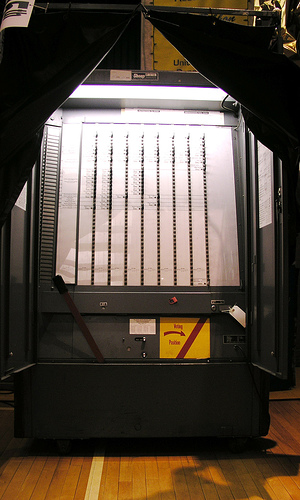John Burnside 1916 – 2008
It is just incredibly sad to announce that John Burnside, Harry Hay’s lifetime partner, has passed, peacefully in San Francisco, surrounded by the circle of Radical Faeries who have taken care of him since Harry passed.
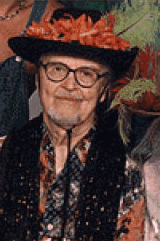 John Lyon Burnside III
John Lyon Burnside III
November 2, 1916 – September 14, 2008
John Lyon Burnside III passed away peacefully at the age of 91 in this home on Sunday, September 14 surrounded by the Circle of Loving Companions who had been caring for him. He had been recently diagnosed with glioblastoma brain cancer.
John was an activist, inventor, dancer, physicist, a founder of the Radical Faeries, and partners for nearly 40 years with Harry Hay. Hay started the Gay rights organization the Mattachine Society in 1950 and is considered a founder of the modern gay freedom movement.
John Burnside was born on November 2, 1916 and was an only child . He joined the Navy at age 16. Soon after his discharge he was married to Edith Sinclair.
He studied physics and mathematics at UCLA, graduating in 1945. John pursued a wartime career in the aircraft industry, eventually securing a job at Lockheed as a staff scientist.
His interest in optical engineering lead to his invention of the teleidoscope, an innovative variation on the kaleidoscope that works without the traditional glass chips to color the view. Instead it turns whatever is in front of its telescopic viewfinder into a symmetrical mandala. His patent on the device allowed him in 1958 to drop out of mainstream society and set up the California Kalidoscopes in Los Angeles which soon became a successful design and manufacturing plant. The teleidoscope was sold in stores across the country and was featured in the Village Voice.
John continued his optical innovations in the 1970s, creating the Symetricon, a large mechanical kaleidoscopic device that projects intricate, colorful patterns. Images from the symetricon were used in a number of Hollywood films, including Logan’s Run.
It was in 1963 that John made perhaps the biggest change of his life. After befriending Gay workers at his teleidoscope factory he learned of the ONE Institute, a Gay community center in downtown Los Angeles. While attending a seminar at ONE in September of that year he met Harry Hay. The two began a whirlwind romance and, after divorcing Edith, John moved in with Harry.
Together John and Harry were involved in many of the Gay movement’s key moments. In May of 1966 the two were part of a 15 car motorcade through downtown Los Angeles protesting the military’s exclusion of homosexuals. The event is considered one of the country’s first gay protest marches.
John and Harry appeared as a Gay couple on the Joe Pyne television show in Los Angeles in 1967, two years before the Stonewall riots in New York. In 1969 they participated in the founding meetings of the Southern California Gay Liberation Front, which met in John’s teleidoscope factory.
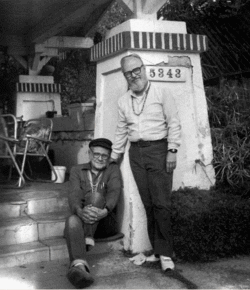 Drawn by Harry’s lifelong interest in Native American culture and a shared involvement with the Indian Land and Life Committee, they moved to San Juan Pueblo, New Mexico in 1970. While there, John and Harry were interviewed for the groundbreaking Gay documentary Word is Out. John was honored at the Frameline GLBT Film Festival in San Francisco this year during the 30th anniversary screening of the film. He was also featured in Eric Slade’ s 2002 documentary film about Hay, Hope Along the Wind.
Drawn by Harry’s lifelong interest in Native American culture and a shared involvement with the Indian Land and Life Committee, they moved to San Juan Pueblo, New Mexico in 1970. While there, John and Harry were interviewed for the groundbreaking Gay documentary Word is Out. John was honored at the Frameline GLBT Film Festival in San Francisco this year during the 30th anniversary screening of the film. He was also featured in Eric Slade’ s 2002 documentary film about Hay, Hope Along the Wind.
In 1979 John and Harry joined with fellow activists Don Kilhefner and Mitch Walker to call the first Spiritual Gathering of Radical Faeries. Fed up with the Gay movement’s steady drift towards mainstream assimilation, the gathering called to Gay men across the country. Since that time dozens of Faerie gatherings have been called around the world and permanent Radical Faerie sanctuaries have formed across the country. The movement helped to nurture and create a specifically Gay centered spiritual exploration and tradition.
John published a short essay in 1989 titled "Who are the Gay People?", that helped explain his views of Gay people’s role in the world. John writes,
“The crown of Gay being is a way of loving, of reaching to love in a way that far transcends the common mode.”
In 1999 John and Harry moved to San Francisco where they continued their activist work. A group of Radical Faeries, the Circle of Loving Companions, became caretakers for the two of them. Harry Hay died in 2002 at the age of 90. The two had been together for 39 years.
In a 1989 Valentine to Harry, John Burnside wrote, “Hand in hand we walk, as wing tip to wing tip our spirits roam the universe, finding lovers everywhere. Sex is music. Time in not real. All things are imbued with spirit.”
John was a familiar and much loved presence in San Francisco’s LGBT Community. He rode every year, including this last, in the San Francisco LGBT Pride Parade. He never missed a single Faerie Coffee Circle held each Saturday in San Francisco’s LGBT Community Center.
Speaking for the Circle of Loving Companions, John’s friend of 27 years, Joey Cain said:
“We are sadden by our dear, sweet John’s passing, but are gratified that John’s last years were happy and he was surrounded by people who loved him. His life dispelled the notion that haunted all the early LGBT freedom fighters, that without the hetero family structure you will die lonely and unloved. The work that John, Harry and the other LGBT pioneers did has dispelled that destiny forever for all of us.”
Donations in John’s honor may be made to the Harry Hay Fund, to continue the activist work of John Burnside and Harry Hay. Donations may be sent to
The Harry Hay Fund
c/o Chas Nol
174 ½ Hartford Street
San Francisco, CA 94114
ADDENDA:
A celebration of the life of John Burnside
Saturday, November 8, 2008
12:00 noon
San Francisco LGBT Community Center
1800 Market Street
San Francisco
Wear something festive.
Public street parking is limited.
The Center is accessible by public transportation.
MUNI J,K,L,M,N,F
bus lines 6,7,61,71
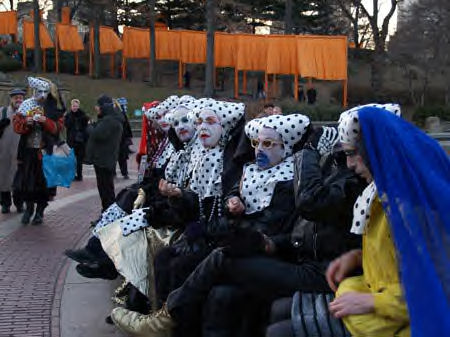 The Sisters of Perpetual Indulgence have been a colorful and important part of the LGBT community on both coasts for three decades. Now the divine theater of these highly effective and colorful provocateurs will be officially enshrined in a special exhibit at the San Francisco Public Library.
The Sisters of Perpetual Indulgence have been a colorful and important part of the LGBT community on both coasts for three decades. Now the divine theater of these highly effective and colorful provocateurs will be officially enshrined in a special exhibit at the San Francisco Public Library.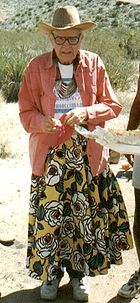 And on Another Coast altogether, some interesting news involving Ugly Betty actor, Michael Urie, who
And on Another Coast altogether, some interesting news involving Ugly Betty actor, Michael Urie, who 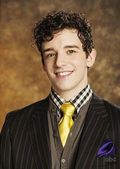 plays "Marc St. James," the catty, ambitious and hilarious assistant to Vanessa Williams delicious "Wilhemina Slater"…word in today's papers that he will star in The Tempermentals, a play by Jon Marans starting April 30 at the Barrow Group Studio Theater. The play is about the origins of the Mattachine Society, started by Harry Hay in 1950 when "tempermental" was a code word for Gay.
plays "Marc St. James," the catty, ambitious and hilarious assistant to Vanessa Williams delicious "Wilhemina Slater"…word in today's papers that he will star in The Tempermentals, a play by Jon Marans starting April 30 at the Barrow Group Studio Theater. The play is about the origins of the Mattachine Society, started by Harry Hay in 1950 when "tempermental" was a code word for Gay.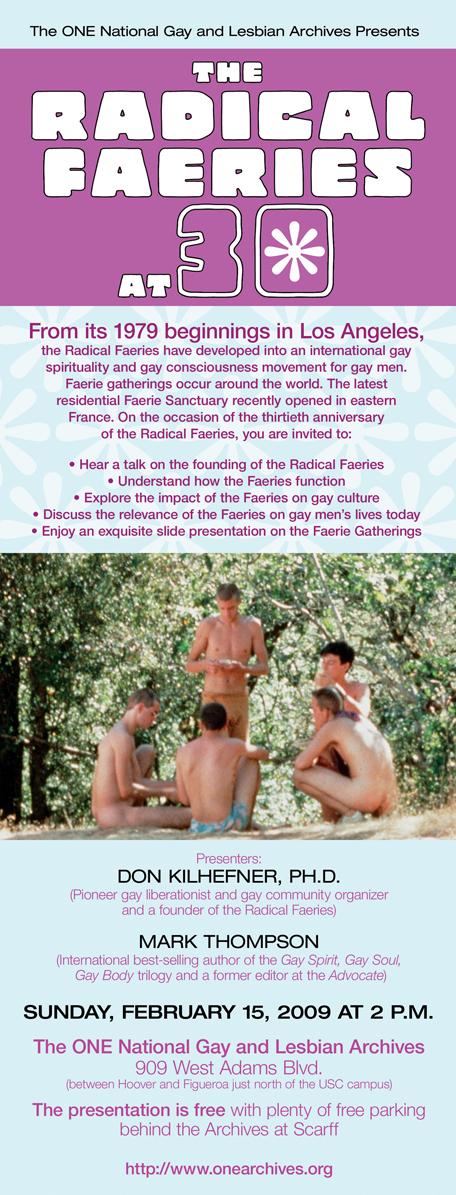
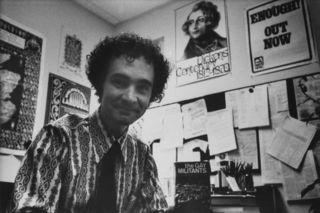
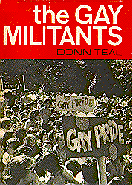
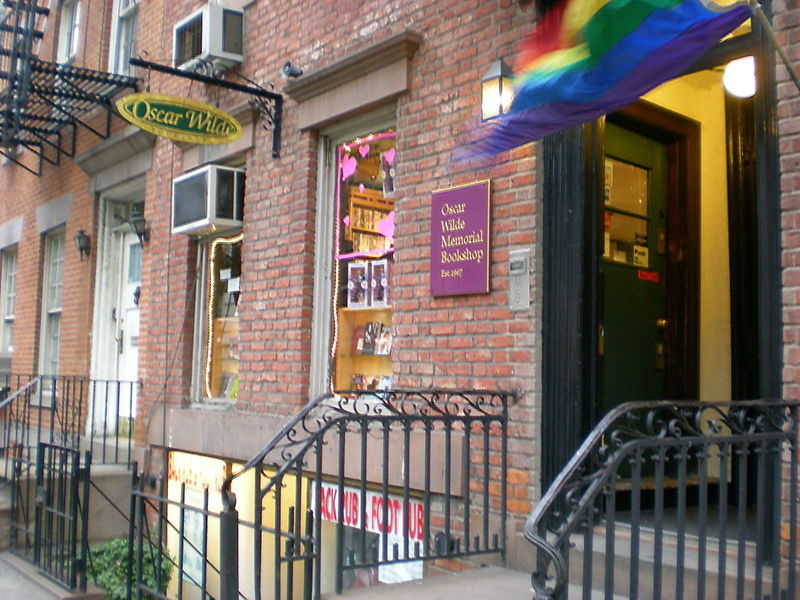
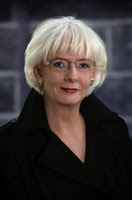

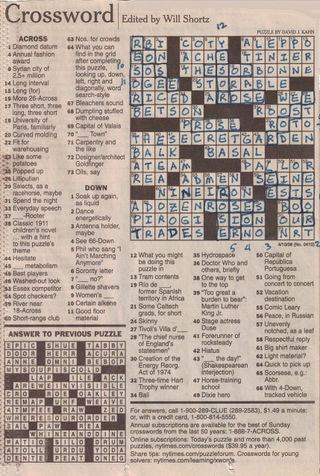
![78cover[1] 1](/wp-content/uploads/2008/12/6a00d8345161a069e20105368e903e970b-120wi.jpg)
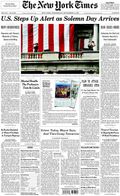
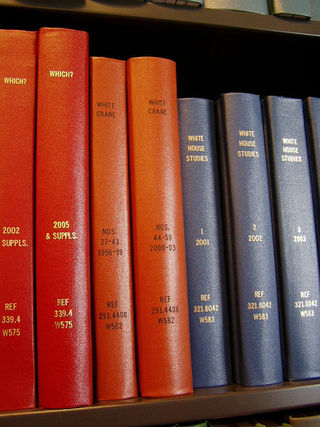
![Boyd-prophet-cover[1]](/wp-content/uploads/2008/12/6a00d8345161a069e20105367876b0970c-320wi.jpg)
